|
By Heather One of Fat Creep's fans has recently come to the end of a diet and she wants to know how she can stay at her current weight. She doesn't want to lose weight anymore and especially doesn't want to gain any: she has a wedding dress to fit into in four months! Having competed three 'lifestyle changes' myself I know that counting calories becomes near impossible when you reach your target weight. You feel there is no point in it and importantly, the time strain required to efficiently keep a calorie record becomes especially onerous. I call diets 'lifestyle changes' because I know that my weight gain is for the most part a result of my incorporating undesirable habits into my diet and that I need to make a concerted effort to regulate my consumption and to stay fit. That is the crux of the problem: when the diet is over you cannot revert to the previous norm, your norm has to change. I got within my 'happy weight range' about six months ago and so far, I have stayed relatively stable. These are my top tips for staying slim after a diet:
If you have any more tips, please comment below.  Although your personal finances and your business success are my primary interest, I believe you only operate at peak efficiency when you're fit and healthy. If you feel good, it filters through to your work. To help you with that, click for your free ebook: The Quick Guide to Sexy
2 Comments
By Dr Harry You may have heard about the target heart rate and how you can use it to grade your exercise routine. You may also be familiar with the maximum heart rate.  A normal heart rate is anywhere between 60 and 100 beats per minute (bpm) in adults. Your resting heart rate will be somewhere in this range, and most people have a resting heart rate of 60 – 80 bpm. Children have a slightly higher heart rate, which varies with their age. You may have noticed how your heart rate goes up with exercise, or strong emotion such as excitement, stress or anger. It also decreases when you are relaxed or asleep (although you may not have noticed this, because you were asleep!) But there is an upper limit to everyone’s heart rate – called the maximum heart rate. It won’t keep increasing indefinitely. As you age, the upper threshold decreases and you can only reach lower maximum heart rates safely. To calculate your maximum heart rate subtract your age (in years) from 220. This method is a “rule of thumb” and is not perfect. So use it as a guide. There are more accurate ways of measuring maximum heart rate which are expensive and time consuming, requiring specialist input but as a first approximation, this method is fine. So for a 50 year old person, their maximum heart rate would be 220 – 50 = 170 bpm. For an 80 year old, it is 220 – 80 = 140 bpm. Remember this is a maximum heart rate. You shouldn’t push your heart to make it work at this level because it may be harmful. We use the maximum heart rate number to work out how intensely to exercise. We should aim to exercise enough to reach at least 50% of the maximum heart rate, but not so hard that we are pushing our hearts to more than 85% of the maximum heart rate. So for the two examples above: You can see how exercising at 50% of the maximum heart rate may be possible with light exercise such as a brisk walk or slow jog because it is quite close to most people’s resting heart rate. If you want to exercise at the upper end of the target heart rate, you will need to increase the intensity of exercise. But you don’t have to work flat-out every time you work-out. If you can’t carry on a conversation while you are exercising you may be pushing it too hard. Keeping within 85% of the maximum heart rate will not strain you but at the same time it will keep your heart and lungs healthy, and burn calories. Below is a spreadsheet to help you calculate your maximum and target heart rate. You can use it if you are aged thirteen and over.
Please note this is general advice and does not constitute specific medical instruction. Before you embark on an exercise schedule, seek advice from appropriately qualified and licensed health care provider. Check with your physician if you are taking any medications, as the target heart rate values may need to be adjusted.  Although your personal finances and your business success are my primary interest, I believe you only operate at peak efficiency when you're fit and healthy. If you feel good, it filters through to your work. To help you with that, click for your free ebook: The Quick Guide to Sexy by Louise I want you to imagine being alive...well...about a million years ago. Are you picturing yourself huddled in a cave? Worried about not having showers or new clothes? What do you think you'd be doing for most of the day?  When most people picture life a million years ago, they picture cave-dwelling, dirty Neanderthals who spent their days hunting, fighting, and grunting. And - to be fair - that's not a completely inaccurate picture of what life was probably like. What could we possibly learn about being healthy and lean from such savages? The Answer: A whole lot more than you might expect. Here's the deal: Evolution is an incredibly slow process. Slower than you think. This is really important, because it means that those "savages" that lived a million years ago - well, they weren't all that different from you or me. The humans who survived were those who were well adapted and adjusted to their environment, their diet, and their lifestyle. Consequently, they've got a few things to teach us about how to be healthy and how to keep our bodies looking good (after all, you couldn't run away from predators if you had to lug around a bunch of belly fat). So what was life like for them:  1. What'd They Eat? A million years ago, you spent pretty much every day either hunting for food or else walking around gathering small bits of food. You'd come across a few plants here and there and occasionally some berries that were not poisonous to eat. Mostly, though, you'd look for animals that you could eat (while avoiding animals that might eat you!). Humans lived this way for millions of years. During that time, our genes mutated through the evolutionary process so that the humans who survived were those who were able to stay healthy and lean on the most commonly available foods (i.e., all parts of animals, green leafy vegetables, a few tubers, a sprinkling of nuts and seeds, and occasionally some fruits). What does this tell us? It tells us that our bodies have been programmed, for millions of years, to thrive on meats, vegetables, and a spattering of nuts, seeds, and fruits. Lesson #1: Stick to Vegetables and Meats. 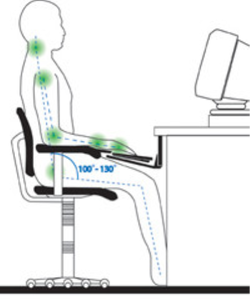 2. Did They Exercise? Living a million years ago doesn't sound like a very appealing life to most of us. I mean, for a start, there was no Facebook and no Downton Abbey! So what'd they do with all that free time? Did our ancestors go for morning jogs and afternoon yoga? Not really, but they did move quite a lot. Cavemen didn't sit around all day in front of a computer - they walked a lot, sprinted when necessary, and often lifted heavy carcases and rocks. It shouldn't come as a surprise to us, then, that we often develop many physical problems from sitting hunched over all day. It's not something our bodies ever evolved to do. For you and me, it would be pretty difficult and not very feasible to move around all day and occasionally lift heavy dead animals. However, it is possible for us to increase the amount of time we spend walking rather than driving, and it's entirely reasonable to get some dumbbells to use at home. Lesson #2: Move as often as possible. Run really fast from time-to-time and lift heavy things (safely).  3. I Bet They Partied All Night. Honestly, if you were living a million years ago, you didn't need to get up every morning to go to work. Surely, nights around the campfire (at least when humans were able to control fire about 800,000 years ago) must have been wild and rowdy? Well... There's not much you can do in the middle of the night in the middle of the forest, jungle, or wherever you're living. In all likelihood (and this is harder to prove than diet or exercise), our ancestors went to sleep shortly after it got dark and woke up with the rising sun. And you know what they didn't have? Streetlights shining at them all night. To state the obvious, sleep is important for humans, and our bodies are programmed to sleep when it's dark. If you live in the far north, where you get little sunlight during the winter months, you'll more often be tired during that season. Light disturbs our sleep even though you might not realize it. Unless you live in the countryside without any street lamps shining into your bedroom, a dark curtain should keep it dark enough for you to gain truly restful sleep. Lesson #3: Get More Sleep. Block out as much light as possible when you sleep.  4. Worrying About Getting Eaten By Predators Must Have Been Really Stressful... Whenever people talk about life a million years ago, the conversation invariably turns to how terrible it must have been to try to keep from being eaten by bears, lions, and other dangerous animals. And clearly, actually getting eaten by a bear was a pretty bad thing. But how often do you think humans actually found themselves in grave danger? Once a month? Maybe once a week at most? The point is that humans a million years ago were very stressed, but only every once in a while. Today, we worry about our jobs, our health, and everything else in our lives pretty much all day every day. And I, as much as anyone else, know exactly how hard it is to stop worrying and stressing. However... Our bodies didn't evolve to be able to handle chronic stress. It may seem like sudden and intense stress would be worse, but it's the chronic stress that leads to a host of health problems from continual release of stress-related hormones. As important as nutrition, exercise, and sleep are, chronic stress may play an even larger role in our overall health and weight (after all, hormonal imbalances can often cause weight gain). Lesson #4: Chill Out. Find ways to unplug and de-stress. Our genetic make-up is not all that different from our cavemen ancestors, but we have changed our habits dramatically. Although we can't (and probably don't want to) turn back the clock to prehistoric times, we can still follow a few simple rules that will enable us to live in conditions more suited to our bodies. So, eat nutritious foods, walk more, sleep more, and chill out! I'd love to hear feedback from you! Have you ditched all those sugars or started moving more and felt different or better as a result? How else do you think we modern humans are making it tougher for ourselves? Let me know in the comments below! Louise regularly blogs at locarbolicious.com.  Although your personal finances and your business success are my primary interest, I believe you only operate at peak efficiency when you're fit and healthy. If you feel good, it filters through to your work. To help you with that, click for your free ebook: The Quick Guide to Sexy By Dr Harry One of life's treats is eating out at a restaurant. But it can be difficult to control exactly how many calories you are consuming. If you are trying to maintain a stable weight, the thought of eating out can be stressful. When you visit a restaurant not only are the portion sizes difficult to judge, but you can't be sure what goes into this sauce or that dish. It's not like when you are at home and cooking for yourself, but it’s not something I want to give up either.  So when I visited McDonalds the other day (to research this article, of course!) I was struck by how each menu item on display had a little box clearly showing how many calories are in each serving. So the Fruit Bag was 42 calories, while the McFlurry (ice cream) was 410 calories! When I was given my tray, the trayliner (which on one side shows the latest promotion) has on the reverse side a table of nutritional information - which goes into a lot of detail about the fat, sugar content etc. of all the food and drink. The McDonald’s Android app also makes it extremely simple to see this info. Intrigued by this discovery I've started to look for nutritional information in all the places I eat. Since my wife and I spend a lot of Friday evening's after a long working week at the Asian fusion restaurant Wagamama, I was quite disappointed to find that there is no nutritional information displayed in their restaurant, on their menu or even on their website. The “Frequently Asked Questions” section on there does promise that this will be coming in the next few months. Another place we frequently visit is Nando's. Goodness knows how many Nando's I've eaten but I imagine it's over one hundred. Good news here; their website contains menu listings with calorie and nutritional information, allowing me to tot up the calories of one dish versus another. So checking out my favourite food combinations I can see that 1/2 chicken, chips and corn equals 778.6 calories (they are very precise!) I also usually have a "bottomless" soft drink, which in reality is 2 or 3 glasses of coke or fanta; another 200-300 calories. Sometimes we have dessert - which is usually a mouthwatering chocolate cake. Unfortunately I have just learnt the caloric cost of this - another 733 calories! I might have to share one next time. The calorie total for one such meal is a trouser-stretching 1750 calories. The guideline daily calorie consumption for adults is between 1800 and 2500 calories, so that one Nando’s meal is okay if you don’t plan on eating much else that day! If this information became more widespread in restaurants I think it would be helpful for those who want to keep their calorie intake within sensible limits. This can be useful to ensure you don't end up over-consuming which might lead to fat creep. Until all my favourite restaurants do publish this information I will have to use satiety as my guide. And continue to track my weight weekly using the Fat Creep™ weight tracker app.  Although your personal finances and your business success are my primary interest, I believe you only operate at peak efficiency when you're fit and healthy. If you feel good, it filters through to your work. To help you with that, click for your free ebook: The Quick Guide to Sexy By Heather and Dr Harry With the rise in obesity has come a rise in harmful health consequences such as type 2 diabetes. These two conditions go together in so many cases that we are realistically facing a 'diabesity' epidemic. The scary thing is that diabetes can be a silent illness - the symptoms don't really shout out 'diabetes!' - and by the time you realise it, it's too late to reverse the damage to your body. But don't despair. The good news is that diabetes is simple to diagnose, and even modest amounts of physical activity can really improve the lot for the person with diabetes. So, what is type 2 diabetes? If you have diabetes, you have too much sugar in your blood. Type 2 diabetes affects overweight and obese people, young and old. It is different from type 1 diabetes, which generally starts in teenagers or in early adulthood (we will not talk about type 1 diabetes, since it is not associated with being overweight). Blood sugar can be measured in two ways: directly and indirectly. The direct measurement is straightforward - you get a blood sample and measure the amount of sugar (more specifically, the sugar glucose). The result tells you the blood sugar level at that particular moment in time. The indirect measurement is again a blood test. But the result gives you an indication of the average amount of sugar that was in your blood over the last 3 months! It's a kind of long-term check of sugar control and is called the HbA1c test.
 Why are blood sugar levels high in type 2 diabetes? After a meal, your food is broken down into basic units including sugars such as glucose. Sugar is supposed to be taken out of the blood stream and into the growing tissues or organs by insulin. Insulin production is meant to rise when blood sugar rises and fall when blood sugar falls. People with type 2 diabetes:
If you have any concerns, consult your healthcare provider! What is the lifestyle of a person with type 2 diabetes like? To control the condition a diabetic person has to:
A pre-diabetic state can even be reversed by taking action to remedy the overweight or obese contribution to the insulin resistance. That has got to be the silver lining to that particular cloud. Are there any other risks associated with having diabetes or a high HbA1c? Unfortunately, yes. The risk of developing one or more of the following problems rises if you have type 2 diabetes:
If you successfully manage to lose weight and are allowed to come off medication, you have to maintain that weight to stay of the meds. If you become obese again it is likely that problems in managing your blood sugar will recur. Inspiration: This article was inspired by a blog written by Dan Hon. He was told that he was pre-diabetic but according to his own account, he thought the doctors were wrong. In January 2012, a couple of years after the warning, he was diagnosed with type 2 diabetes. He's upset with himself for not listening to the good advice of his doctors and has since becoming an exercise fanatic but of course that won't cure the diabetes. He's currently a fan of tracking health data. A big thank you to the Fat Creep™ fanatic, Styles J, that led us to this blog. Sources: patient.co.uk, diabetes.com and diabetes.org.uk  Although your personal finances and your business success are my primary interest, I believe you only operate at peak efficiency when you're fit and healthy. If you feel good, it filters through to your work. To help you with that, click for your free ebook: The Quick Guide to Sexy |
By Heather
|
||||||||
Heather Katsonga-Woodward, a massive personal finance fanatic.
** All views expressed are my own and not those of any employer, past or present. ** Please get professional advice before re-arranging your personal finances.
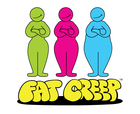
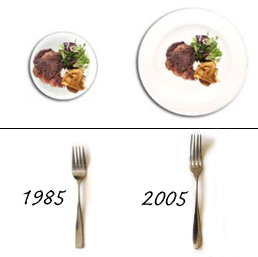
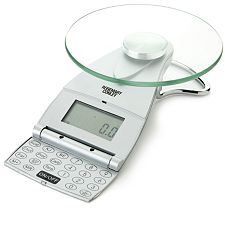


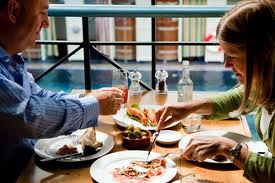
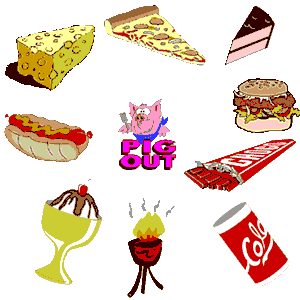


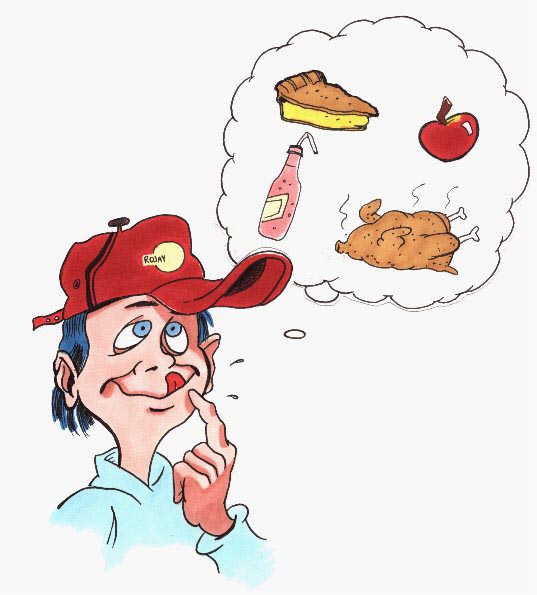


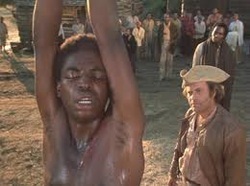

 RSS Feed
RSS Feed


